כ״ה אב ה׳תשע״ט | August 26, 2019
The Encyclopedia That Isn’t Just an Encyclopedia
On the surface, Sefer HaErchim Chabad seems to be a collection of Chassidus on various topics. But upon closer review, it turns out that it’s much more than that.

By Anash.org and Kehos
Sefer HaErchim Chabad is not your common encyclopedia. Popular encyclopedias are generally meant for the uninformed. If one wants to read about a subject he is unfamiliar with, he might open an Encyclopedia Britannica. For, lehavdil, a Torah subject, he might check Encyclopedia Talmudis.
The objective of Sefer HaErchim is a different one. The Rebbe, in a letter to Harav Shlomo Yosef Zevin, editor-in-chief of Encyclopedia Talmudis, explained that objective is twofold. First, to gather explanations on one topic scattered in hundreds of sifrei chassidus and present them all as one entry. The second, and primary reason, is to have footnotes and endnotes referencing where a particular topic is discussed, allowing for further study.
Although perhaps not the original intention of Sefer HaErchim, the author, Reb Yoel Kahan, has presented students of Chassidus with a valuable gift. Whether by reconciling contradictions, or explaining the words of the Rebbeim, Sefer HaErchim contains explanations in Chassidus, no minor detail to be overlooked.
With the recent publication of volume 9 of Sefer HaErchim Chabad, Anash.org will be exploring some of the features of this special sefer.
The following is an excerpt from an in-depth review written for Anash.org by Rabbi Moshe Gourarie, mashpia in Pomona, NY, and associate editor of Chassidus Mevueres on Tanya. The full Hebrew review, spotlighting all three objectives, can be found at the bottom of this article.
In the full review, Rabbi Gourarie addresses all the objectives of this sefer, and explains in great detail how Sefer HaErchim (and particularly this new volume), is not merely a compilation of sources, but a true masterpiece. Just from the way in which the sources in Chassidus are pieced together, one gains an entirely new understanding in the sugya which is being discussed.
Rabbi Gourarie also gives examples of some of the novel explanations in the words of the Rebbeim that are contained in the new volume. In the translated excerpt that follows, we bring you one such example of a brilliant and novel explanation of a sicha.
*
In Shemoneh Esrei of Rosh HaShanah and Yom Kippur we say “ויעשו כלם אגדה אחת, לעשות רצונך בלבב שלם” – “and they all will form a single assembly to carry out Your will with a perfect heart.”
In Likutei Sichos (vol 2, page 436), the Rebbe explains that this passage from the Machzor is teaching us a profound lesson. It is impossible to have a true “single assembly,” a bona fide unity, unless the purpose is “to carry out Your will.” For if they were to gather for any other purpose, although they may all have the same goal in mind, each individual would be acting for his own purposes, and with his own emotional reasons. In the Rebbe’s words – their מציאות, and their הרגשים.
To illustrate the point, an example can be brought from constructing a building. To do so requires many people working in tandem, all with the goal of the completed structure. However, when taking a deeper look, the architect, contractor and builder are each doing it for their own purpose, with themselves in mind. When gathering to serve Hashem on the other hand, the unity comes from the neshama, a true and absolute unity.
In the new volume of Sefer HaErchim, Reb Yoel brings the aforementioned sicha from Likutei Sichos and in an appendix, he explains it in more depth.
Reb Yoel queries that seemingly, the sicha seems to be repetitive. At first glance, מציאות (feeling of self) and הרגשים (personal feelings) would seem to be one and the same. Why does the Rebbe mention both? If they are not the same, what is the singularity of each?
Reb Yoel goes on to explain, as only Reb Yoel can:
Typically, when gathering for a common cause, although the goal is same for all the individuals, their intentions are diverse. Each comes for their own ego, for themselves. As is the case with constructing a building, each individual comes for their own paycheck, and are not concerned with the paycheck of their colleague. This can be defined as “מציאות” – each coming for their own purposes, or their own ego.
In the sicha, the Rebbe is adding another dimension. Not only are they independent in their ego, their מציאות, they are also separated by their emotional reasons, their הרגשים.
It is possible for individuals to lay down their egos, being totally dedicated to a cause or a philosophy. They may be so devoted that they are willing to give up their lives. Nevertheless they remain distinct, each independent and not a true unified group. Each is indeed dedicated to their ideal, but the path with which they reached this conclusion was based on their distinct personalities. Although outwardly appearing to be unified, at the essence each one is separate.
The only true unity, is unity is serving Hashem. Since the unity is one of neshamos, and dealing with neshamos all Jews are indeed unified.
*
To purchase a copy of Sefer HaErchim, volume 9, click here.
To download the full review in Lashon Kodesh, click here.

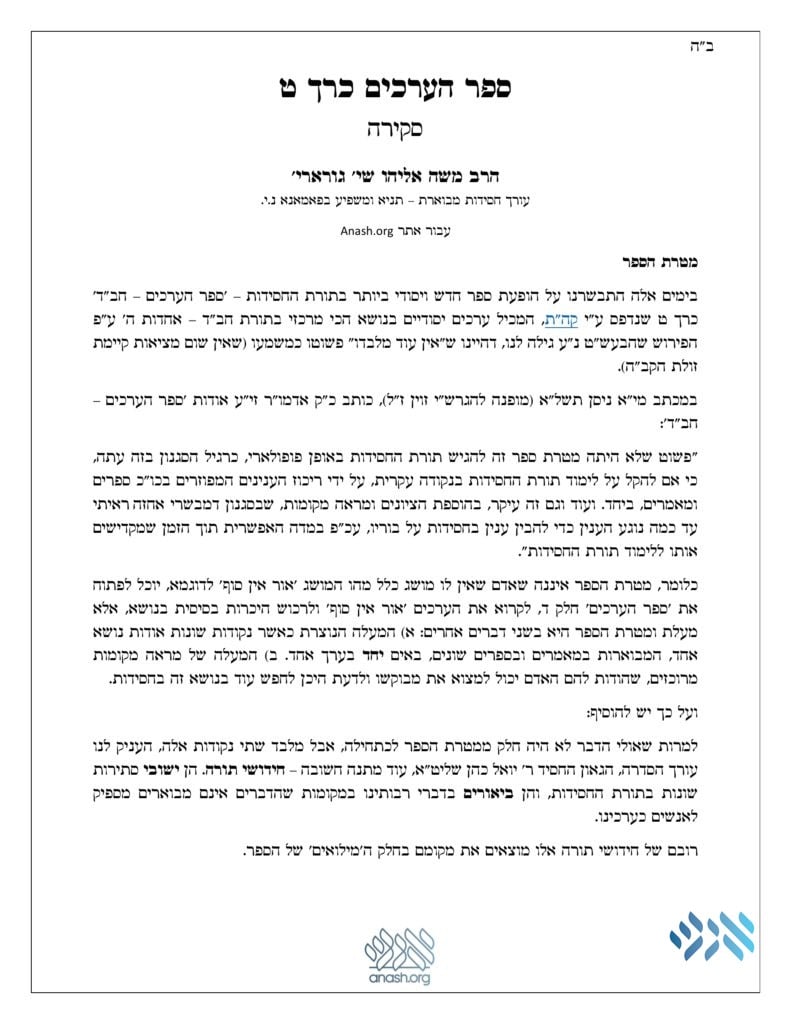
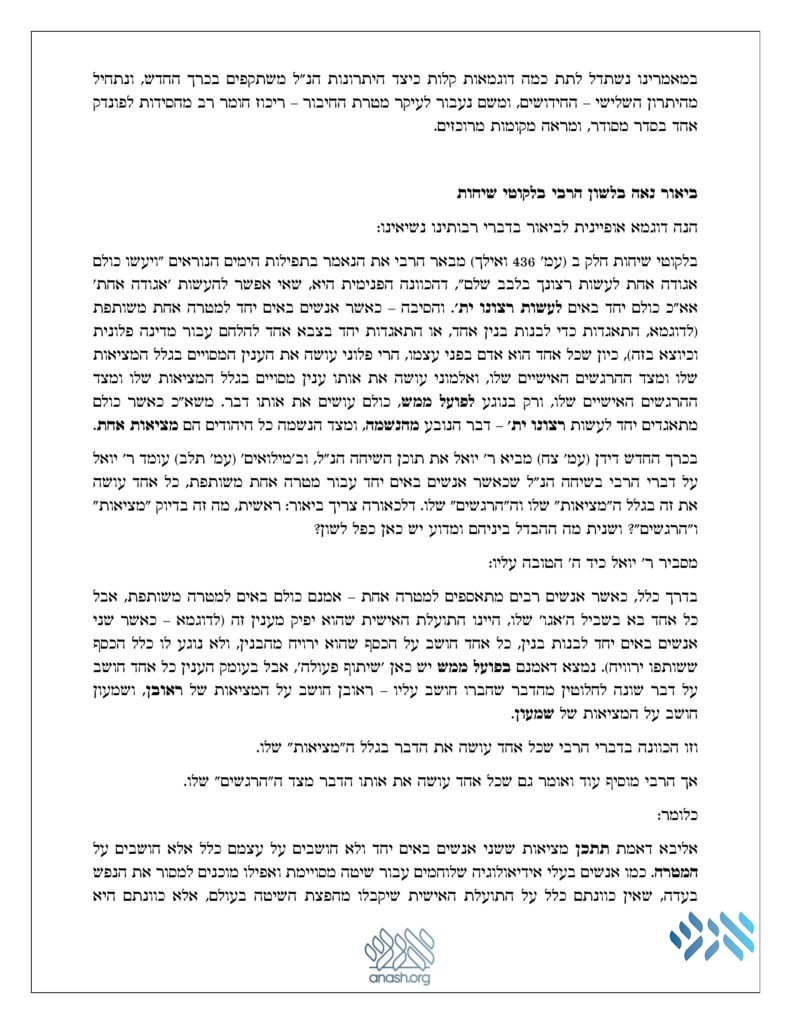

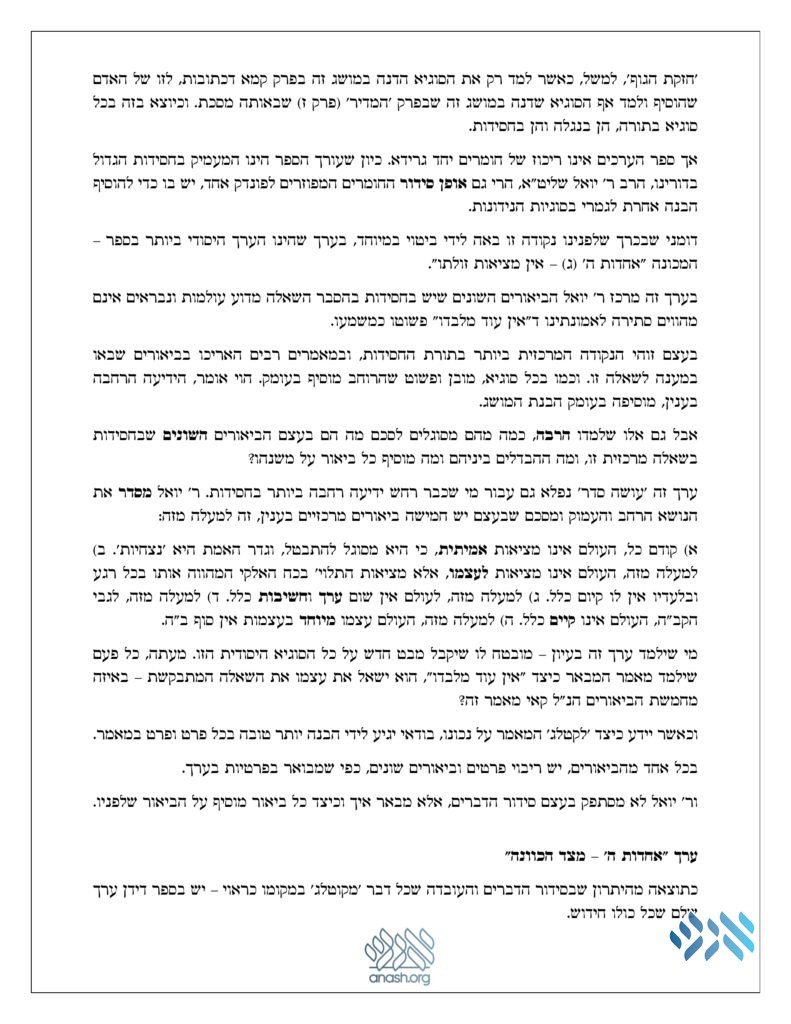

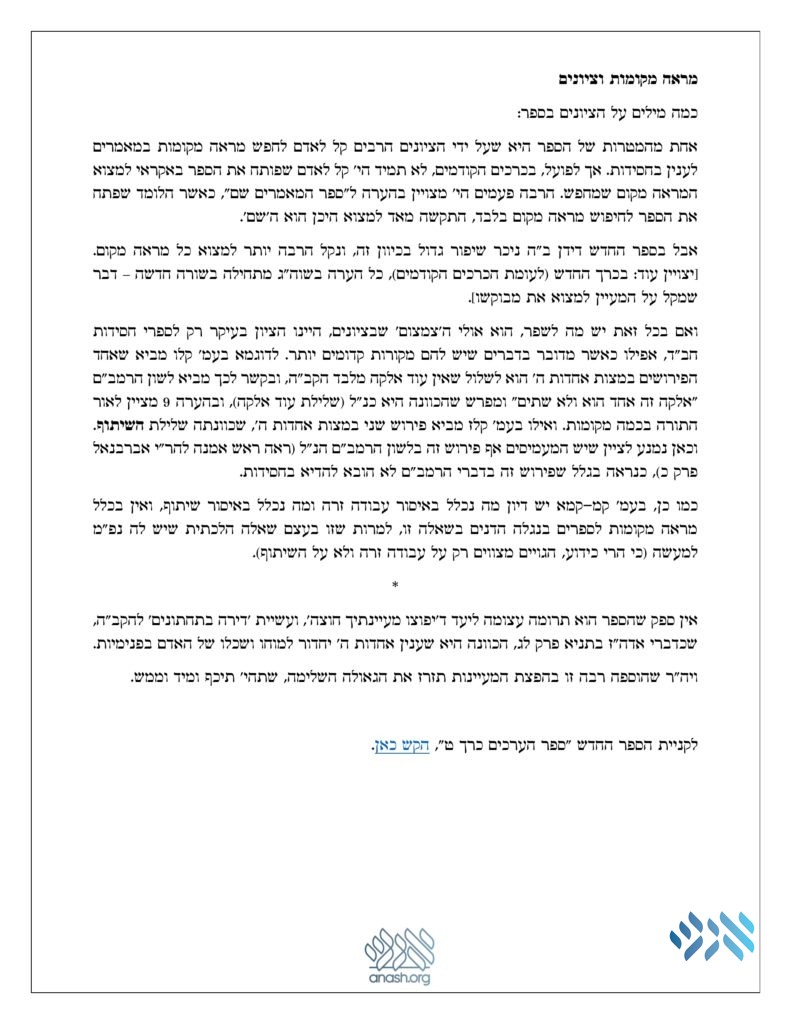
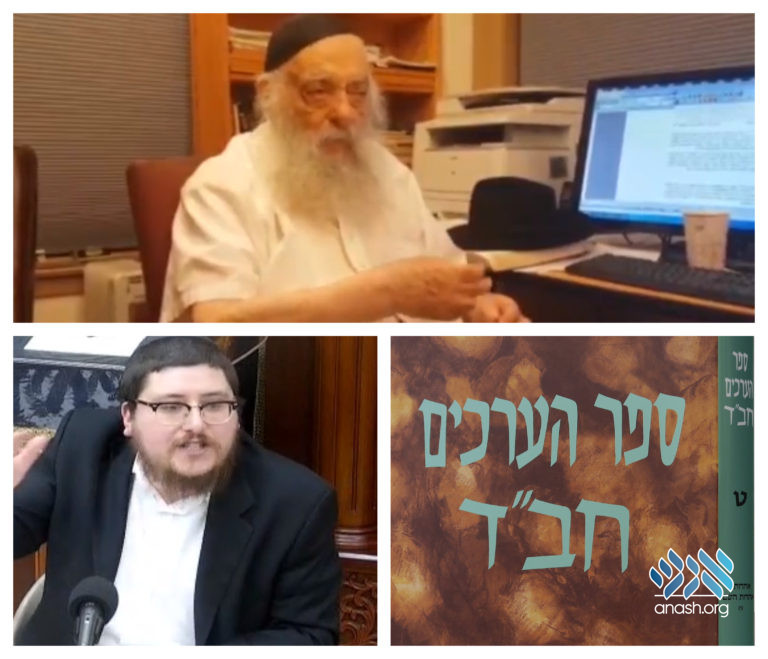
B”H
Very much enlightening. Please continue to share such precious articles. This would be a true embodiment of the Fridiker Rebbe’s Kavono when he founded the Hatomim (which the rebbe was deeply involved in editing).
ברכה והצלחה.
Thank you for posting the Hebrew article and providing a link to download it.